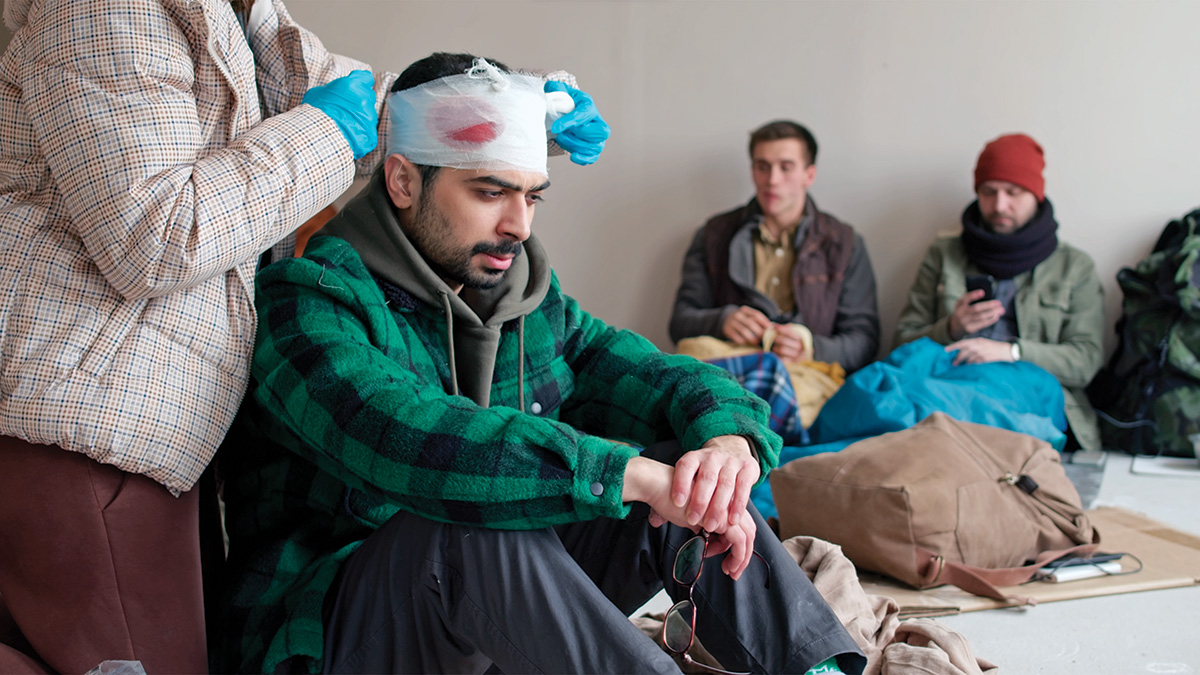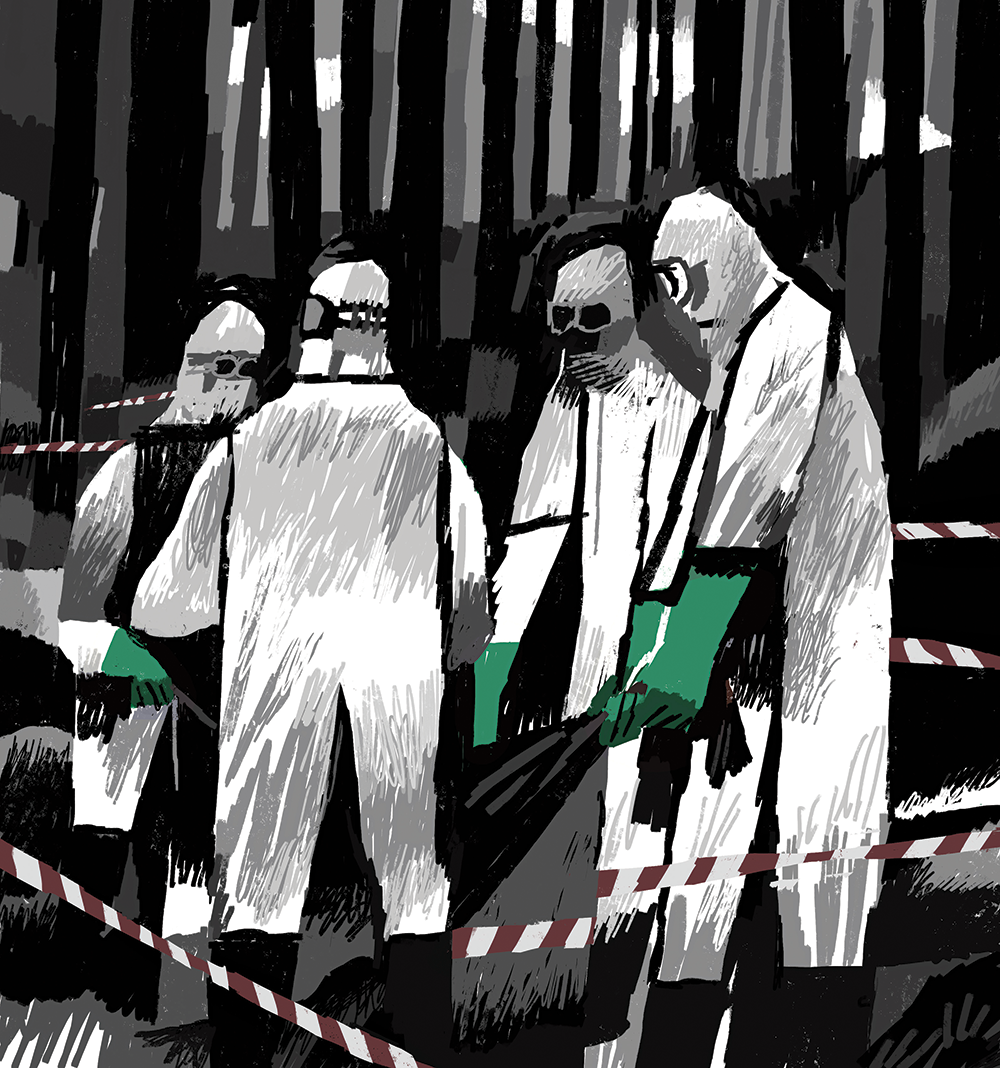By Peter Walton, Associate Editor
Russia’s invasion of Ukraine has unleashed a humanitarian catastrophe. Along with the thousands killed or injured, more than twelve million Ukrainians have been internally displaced or have fled to neighboring countries. Russia’s air bombardment of Ukraine’s power grid, water supply, and health infrastructure has cut off an estimated 17.7 million Ukrainians from the humanitarian assistance they desperately need, turning the cold of winter into another weapon of war. Ukraine’s prosecutor general has registered more than seventy thousand charges of Russian war crimes, including indiscriminate shelling of civilians, targeting of relief convoys, torture, murder, and sexual violence. For historian Lawrence Freedman, it has become a genocidal war: Russia’s changes to education, currency, and language in Ukrainian territories under its control have denied the existence of a separate Ukrainian people.
But Ukraine is not exceptional. Russia’s blatant violation of international law in Ukraine is an extension of the “total war” strategy it employed in its air campaign in Syria’s civil war, and in Chechnya before that. Ukraine is only the most visible example of contemporary conflicts subjecting populations to systematic violence and depriving them of life-saving humanitarian assistance. In Ethiopia, Sudan, Yemen, and the Democratic Republic of the Congo, the eroding purchase of international humanitarian law, combined with intensifying geopolitical competition and the rapidly changing character of modern warfare, have put enormous strain on humanitarian actors. Deliberate attacks on health care facilities, transports, and personnel have forced humanitarians to flee or go underground, often literally, in makeshift, fortified treatment sites. States experiencing civil war are attacking their own populations and refusing to allow aid to reach communities they view as their enemy. And in the Americas, migrants from South and Central American seeking asylum in the United States and Mexico are targeted by organized criminal networks engaged in human trafficking. Traditional humanitarian approaches aren’t enough.
Dædalus takes a transdisciplinary approach to understanding both the dilemmas facing humanitarian health actors in conflict areas and the potential for innovation in humanitarian health delivery.
At the same time, ethical imperatives to decolonize and localize humanitarian health services are challenging the field’s long-standing values and power systems. As Ana Elisa Barbar asks, what values and purposes do “humanitarian principles serve if they are not confronting the inequitable distribution of power, knowledge, and resources in the humanitarian space?” Localization and the representation of affected populations in organizational leadership are fundamental to this question, but are rarely implemented comprehensively.
The Spring 2023 issue of Dædalus on “Delivering Humanitarian Health Services in Violent Conflicts” takes a transdisciplinary approach to understanding both the dilemmas facing humanitarian health actors in conflict areas and the potential for innovation in humanitarian health delivery. Guest edited by Jaime Sepúlveda (University of California, San Francisco), Jennifer M. Welsh (McGill University), and Paul H. Wise (Stanford University), the volume attends to both conceptual and operational challenges. The issue’s contributors include doctors, field workers, scholars, leaders of international health organizations, military servicepeople, and journalists—as well as poets, painters, photographers, and novelists. Recognizing that shared compassion cannot be mandated but must be authentically felt, the issue draws on the power of the arts, and features visual and written works by artists whose lives have been shaped by violent conflict and displacement.
Divided into two sections, the volume first explores the effects of twenty-first-century violent conflict on humanitarian health. The introduction by David Miliband and Ken Sofer underscores that “health care for civilians in conflict settings around the world is suffering not just from operational or technical challenges, but from a broader ‘system failure’ globally.” Anastasia Shesterinina considers the roles humanitarian actors play among nonstate, state, civilian, and external actors in contemporary civil wars. She maps systems of relationships to demonstrate that relationships established by humanitarian actors are contingent and transform for reasons outside their control.
While civil wars are the dominant form of twenty-first-century violent conflict, Lawrence Freedman turns to the Russian invasion of Ukraine to imagine what a war between great powers might look like. Freedman explores the humanitarian consequences of two contrasting ideal types of warfighting: total war, represented by Russia, that treats civilian infrastructure as a legitimate military target; and the approach taken by Ukraine, using “smart” NATO weapons to attempt to avoid civilian casualties. Ana Elisa Barbar then considers the ethical principles guiding humanitarian health responses, and identifies the pressures and narratives that constrain humanitarian health actors from meeting their commitments to ethical conduct.
The final essays in this section focus on two specific conflict environments: urban conflict zones and organized criminal enterprises. Keith Stanski examines how urban conflict zones have come to exemplify many of the most intractable humanitarian dilemmas around the delivery of medical care: in particular, operational independence and physical safety, as encountered in Syria and Yemen. Sergio Aguayo points out that some of the greatest humanitarian challenges are generated by political and criminal violence in areas not formally considered to be at war. Aguayo sharply criticizes the lack of attention given to organized crime in human trafficking in the Americas, and offers recommendations for Mexican and U.S. migratory and asylum policies that could help liberate migrants from the control of criminal networks.
Artistic works centered on the themes of violence, displacement, compassion, and life after war are included in the Dædalus volume.
The second half of the issue looks toward the evolving challenges confronting humanitarian health responders. Ann-Kristin Sjöberg and Mehmet Balci explore the role of nonstate armed groups in providing health care. They identify strategies for navigating the complex web of armed actors in intrastate conflicts, and stress the importance of treating nonstate armed groups not just as threats, but also as potential facilitators and promoters of health care. They look to the specific case of the Autonomous Administration of North and East Syria (AANES) and the Syrian Defense Force, its military wing, with whom they conducted interviews.
Larissa Fast returns to the question of ethics, this time from the perspective of data governance and trust. Fast points out that humanitarian data can function as an empowering and informative tool, but it can also reinforce profound differentials of power in the international health ecosystem, and can even be used by hostile actors to target recipients of aid.
Amanda Murdie and Morgan Barney articulate the importance of localization, a commitment to respect the role of local communities in shaping the goals and means of humanitarian health delivery. They approach localization from “the outside in,” focusing on the role international health nongovernmental organizations (NGOs) can play in promoting local decision-making and diverse leadership. Drawing on their survey of almost one thousand public health NGOs, they highlight the unique opportunities health organizations have to promote peace. But first, they argue, heightened investment, data collection, and rigorous program evaluation by academics and policy-makers are necessary to understand this potential and act on it responsibly.
Punctuating the issue are artistic works centered on the themes of violence, displacement, compassion, and life after war. Sergiy Maidukov, Svitlana Biedarieva, and Mark Neville contribute paintings, illustrations, and photography representing both the horror and the commonplace in twenty-first-century conflicts. Fiction contributions include an excerpt from Viet Thanh Nguyen’s novel The Committed, as well Bina Shah’s “A Bird with One Wing.” Elliot Ackerman recounts his experience coordinating, from a distance, the extraction of a handful of Afghans during the U.S. evacuation of Kabul in summer 2021. And Nina Murray, Fouad M. Fouad, Tariro Ndoro, ko ko thett, and Hajar Hussaini contribute poetry on Bucha, Aleppo, identity, and survival.
This Dædalus issue is a part of the Academy’s project on Rethinking the Humanitarian Health Response to Violent Conflict. Financial support for the project was provided by Louise Henry Bryson and John E. Bryson, the Malcolm Hewitt Wiener Foundation, and The Rockefeller Foundation.
The Spring 2023 issue of Dædalus on “Delivering Humanitarian Health Services in Violent Conflicts” features the following works:
Preface
Jennifer M. Welsh, Paul H. Wise & Jaime Sepúlveda
Introduction
David Miliband & Ken Sofer
Understanding Violent Conflict’s Effects on umanitarian Health in the Twenty-First Century
Identifying Contemporary Civil Wars’ Effects on Humanitarian Needs, Responses & Outcomes
Anastasia Shesterinina
Humanitarian Challenges of Great Power Conflict: Signs from Ukraine
Lawrence Freedman
Challenges for Ethical Humanitarian Health Responses in Contemporary Conflict Settings
Ana Elisa Barbar
Humanitarian Health Responses in Urban Conflict Zones
Keith Stanski
The Great Evasion: Human Mobility & Organized Crime in Mexico &
Its Borders
Sergio Aguayo
Evolving Challenges Confronting Humanitarian Health Responders
In Their Shoes: Health Care in Armed Conflict from the Perspective of a Non-State Armed Actor
Ann-Kristin Sjöberg & Mehmet Balci
Talk Is Cheap: Security Council Resolution 2286 & the Protection of Health Care in Armed Conflict
Simon Bagshaw & Emily K. M. Scott
Localizing Responses to Gender-Based Violence: The Case of Women-Led Community-Based Organizations in Jordan
Dima M. Toukan
Localizing the NGO Delivery of Health from the Outside In
Amanda Murdie & Morgan Barney
Conclusion
Paul H. Wise, Jennifer M. Welsh & Jaime Sepúlveda
Poetry, Visual Art, Fiction & Creative Nonfiction
Izium and June 10
Sergiy Maidukov
The Morphology of War I
Svitlana Biedarieva
Children from Bogdanovka inside Their Burnt-Out School Bus, Kyiv Region
Mark Neville
how to write a poem about Bucha
Nina Murray
A Bird with One Wing
Bina Shah
Excerpt from The Committed
Viet Thanh Nguyen
Aleppo Diary
Fouad M. Fouad
Swept Away
Tariro Ndoro
An Evacuation
Elliot Ackerman
A survival guide for exiles
ko ko thett
Disbound
Hajar Hussaini
“Delivering Humanitarian Health Services in Violent Conflicts” is available on the Academy’s website. Dædalus is an open access publication.

